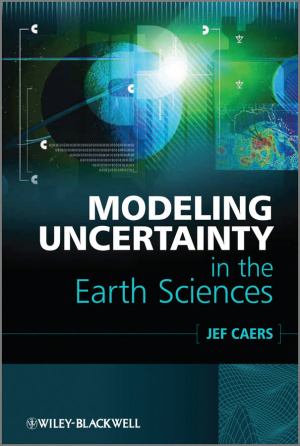Modeling Uncertainty EarthSciences
Modeling Uncertainty in the Earth Sciences

By: Jef Caers, 2011"
John Wiley & Sons Ltd
ISBN 978-119-99262-2
get this book at Wiley
This textbook is an accessible introduction of modeling uncertainty for senior undergraduates and professionals working in the Earth Sciences, Environmental Sciences and Energy Resources and Mining. The book promotes conceptual thinking about uncertainty in a 3 dimensional geological world with sparse datasets. Advanced modelers may not find detailed descriptions of the latest algorithms, but instead will be pushed to rethink underlying principles and main questions geoscientists ask about their models.
The book sets out with a relevant problem on modeling of an oil spill scenario which sets the scene for thinking about uncertainty in earth science modeling and decision making. A basic review of statistics and and data analysis is provided early on in the book, and is followed by a discussion of concepts and definitions in modeling uncertainty. These sections are written in a practical style, with good explanations of the concepts and clear examples.
Subsequent chapters introduce principles and methods for decision making, modeling of spatial continuity and variograms, object models, how to constrain spatial uncertainty with direct and indirect (geophysical) measurements, modeling structural uncertainty and model sensitivity analysis. All chapters discuss the methodology and have specific examples and good visualizations of the problems and results. Case studies draw from groundwater flow and pollution, from predicting the occurrence of diamonds, from tornado charts, from fragmented and faulted reservoirs and from fluvial sedimentology and many others
The author, Jeff Caers, is a Professor of Geological Sciences at Stanford University, California, USA. Prof. Caers’ is a world expert in geostatistics, spatial modeling and modeling uncertainty applied to subsurface characterization for hydrocarbon reservoirs as well as ground water systems. He is intimately familiar with real-world problems and directs the Stanford Center for Reservoir Forecasting, a research program in reservoir modeling and geostatistics with ~20 partners from the Energy Industry. His experience with teaching in an academic setting, and working with professionals shines throughout the book and its case studies. It is particularly evident in the chapters on decision making in face of uncertainty.
I am particularly pleased to see that teaching material associated with the textbook is available for any reader or teacher on GitHub: https://github.com/SCRFpublic/Modeling-uncertainty-in-the-Earth-Sciences Five labs are precisely documented and give hands-on practice with decision making in view of uncertainty, variograms and sensitivity analysis.
